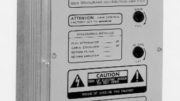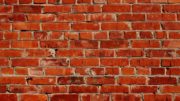There are all sorts of certifications that a building can get as it’s being built. Each one comes from a different organization. You can make sure your lumber is responsibly sourced. You can make sure your materials are energy-efficient. Or, you can use a certain kind of labor, or make sure that your homes aren’t built on an ancient burial ground. Every appliance can be certified, every pipe and wire can be too. But, I think we’re missing one really important building certification here, and here’s my pitch.
Today’s buildings are very “cell-unfriendly.”
We all agree that energy efficiency is important. No one wants to spend too much money on energy and we don’t want to have to keep pulling stuff out of the earth and burning it. So, today’s buildings use barriers to make sure that the heat and cold doesn’t leak out of homes and offices. The problem is that these same materials block cell signals very well.
If that wasn’t enough, there are a lot of other things that block cell signals too. If anything on your building is red, like Spanish tile or red brick, that’s due to iron in its composition. Iron makes things stronger, but it also blocks radio waves really well. The same is true with metal conduits. Whether you’re talking about metal used for housing wiring or metal ductwork, the result is the same: bad cell service inside. And it’s not just cell service, either. This kind of construction blocks Wi-Fi just as well, and even TV signals are affected. In our rush to save money, we’ve blocked some of what makes our lives work today. The result? Money spent on cell boosters, outdoor antennas, and Wi-Fi repeaters. That’s great for companies like Solid Signal that offer these things, but is it really great for the planet?
The solution: the “Radio-Friendly” certification
I’m challenging the electronics industry to create a certification for building materials called “Radio-Friendly.” I’m calling it that because the initials, RF, are a common way of describing broadcasts.
Radio-Friendly construction materials can be built to allow more signals in without sacrificing energy efficiency. It may not always be possible but there are definitely things that can be done.
Radio-friendly glass
Today’s energy-efficient glass lets in as much visible light as possible while blocking pretty much all other forms of radiation (including radio waves.) I’m sure that window makers could re-engineer their coatings to let in radio waves because they are much, much lower on the spectrum than visible light. The fact is that they probably just didn’t try. The result is that today, you may get worse cell service standing in front of a window than standing in front of a wall. It’s true, my house is like that.
Radio-friendly wood
In order to make wood that lets more radio waves through, you generally will use lighter colored wood. No one is going to frame a house in ebony (which is very good at blocking signals) but there are homes framed in redwood. Redwood (there’s that “red” word again) has more iron, so it blocks more signals. The key is finding a wood that’s as strong and durable as possible without a high iron content. I don’t know enough about wood, but I bet it’s possible.
Radio-friendly conduits
Here’s something that probably doesn’t take a lot of work. Most building codes now allow for the use of Romex or similar self-insulating wire rather than putting wires in metal conduits. This will make it easier for radio waves to pass through. However, in areas where there is a need for “trunks” — large open spaces where cables can go — making them out of heat-resistant plastic rather than metal would let signals through.
Radio-friendly ducting
Pretty much all ductwork is made of metal. It may not be solid metal sheeting like you see in action movies like Die Hard. Often times it’s flexible material. I admit that this would be the hardest part of the whole thing. Ducts are made of metal because it’s durable and doesn’t give off chemicals when it burns. Building codes for commercial spaces are pretty clear about making sure no one dies in a fire due to chemical inhalation. But I do feel like it would be possible to design around this limitation. I don’t know how, but I bet someone does
The last piece: Ethernet and coax wiring
A truly radio-friendly space would also have Ethernet and coax wiring to each room that could be dedicated specifically to cellular, internet, or Wi-Fi connections. Putting this stuff in the walls before the drywall goes in costs a fraction of what it costs to drop it in later.
So how about it?
I feel like this is something that should be of interest to trade groups. Maybe it’s a builders’ group, or a communication advocacy group. Or, maybe both. But someone really should take up this charge. Cell service and Wi-Fi are practically as important as electricity at this point. I’m not saying the government has to mandate something like this, but if you were buying a home and you had a choice, wouldn’t you pick the one with better cell service?
In the meantime, if you need to improve cell service in your home or office, check out the great selection of boosters you’ll find at Solid Signal. Have questions? Call us at 888-233-7563 or fill out the form below.





